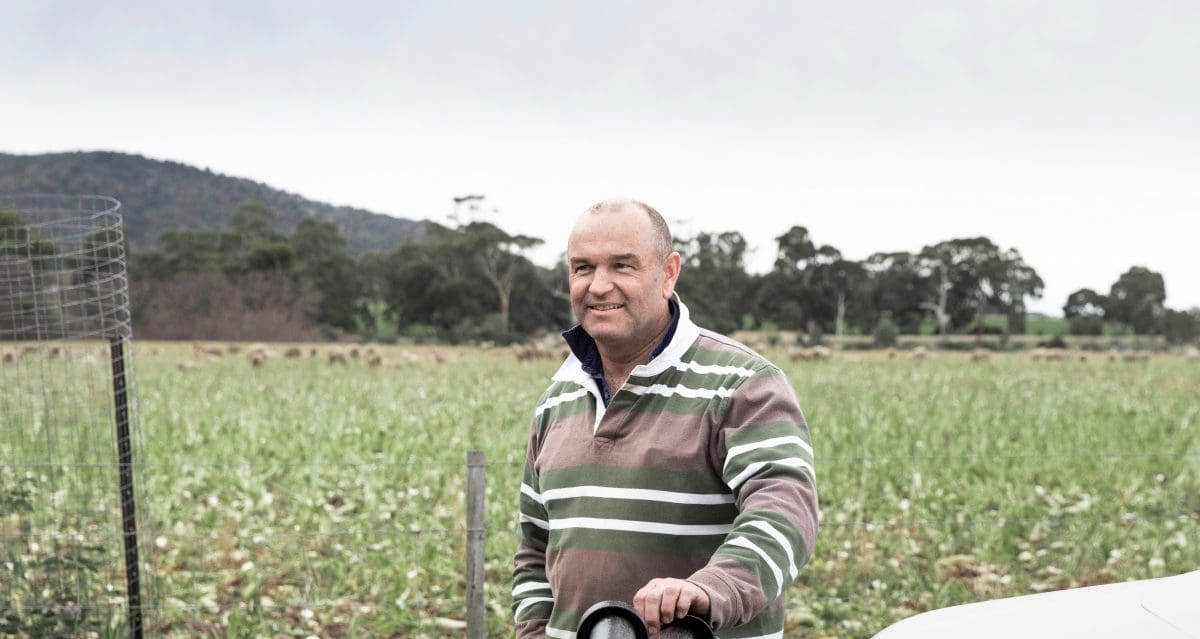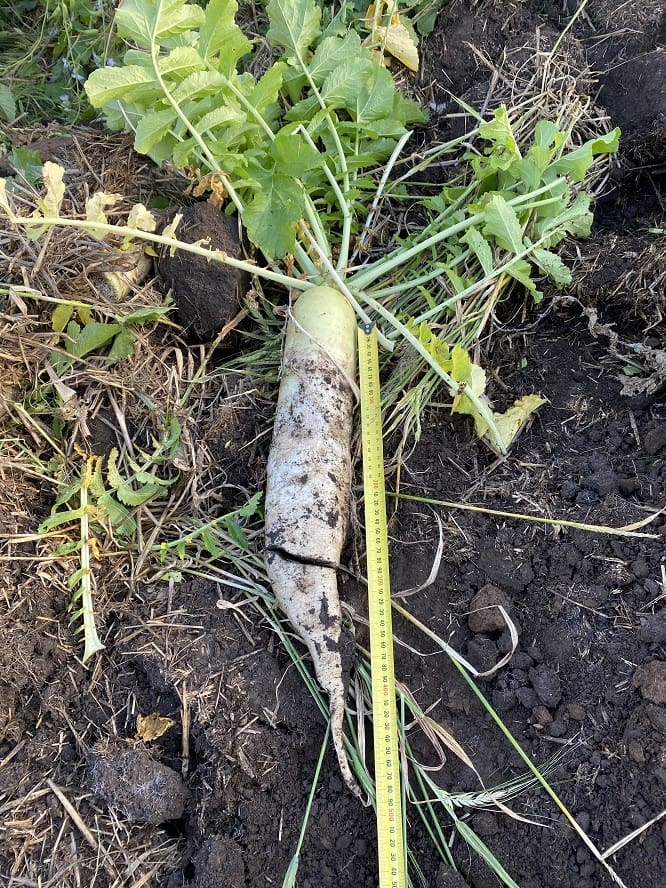
Victorian farmer James Bufton has used tillage radish to ameliorate sodic soils and finishing lambs. (Photo: Bureau of Meteorology)
TILLAGE radish has given Victorian farmer James Bufton a low-impact solution to what looked like an impenetrable soil problem.
Mr Bufton, who farms on Staughton Vale at Balliang between Geelong, Ballarat and Melbourne, has to deal with a sodic barrier under some of his land.

Tillage radish
In a wet year, the sodicity leaches out and the roots are able to push through, but when it’s drier the sodic barrier creates a saline layer of soil that’s virtually impenetrable.
“It more-or-less turns into a layer of concrete,” Mr Bufton said.
“The barley or canola we’re trying to grow is unable to penetrate through for both moisture and nutrient.”
Staughton Vale is primarily a malt barley growing operation, but also grows canola, linseed, peas, oaten hay for dairy operators and ryegrass and lucerne hay for horse owners. It also has its own first-cross ewe and prime lamb operation.
Low-impact soil repair
This season Mr Bufton used tillage radish for the first time as a low-impact way of dealing with the sodic barrier.
“There are various ways that people try to attack it,” he said.
“Some use fairly big hammers in terms of deep ripping or injection of manure, which work but use a lot of horsepower and diesel and product.
“We’re trying to use a smaller hammer and let a plant and nature help us.”
Staughton Vale has a high production system but Mr Bufton is mindful of looking after the soils and using sustainable farming practices.
The use of tillage radish followed consultation with AGF Seeds who suggested it as a solution to the hard soil problem.
Mr Bufton said he was aware that tillage radish could work but he didn’t previously have the conditions or the equipment to use it.
“We bought a SeedHawk air seeder and because it was a cool summer we thought if it was going to work any year, this would be it,” he said.
Trial produces results
A trial 100 hectares was planted. A total of 90ha was used as a green manure crop which will hopefully reap benefits from the roots in the soil. The other 10ha was intensively grazed after being saved for finishing off trade lambs.
The mob was made up of Staughton Vale’s tail-end lambs from the 2020 season and some trade lambs purchased from Tasmania.
The crop ended up being barley that came up post-harvest and tillage radish and the mob was also fed hay and straw.
There were 627 in the mob and they hooked out at 30.6 kilograms average, well above expectations.
“The trade lambs were a Southdown-Merino cross and I was concerned they weren’t going to yield but the tillage radish and barley really put the yield into them,” Mr Bufton said.
It was a 10-hectare paddock, fenced into about 2.5 hectares at a time.
“The 627 happily chewed two and a half hectares down over a week; the 10 hectares lasted us a month and we were very happy with that,” Mr Bufton said.
“They were heavier than we expected and the yield conversion was very good. The tillage radish had a fair bit to do with that end result and we will definitely use it again.
“The sheep took the radish right down to ground level, leaf, stalk and bulb. It’s like a billiard table now – they loved every bit of it.”
While the weight gain and conversion bring immediate benefits, Mr Bufton also has his eye on long-term benefits.
“We’ve seen it converted into kilograms of lamb already, but the thing we haven’t seen as yet is the soil conditioning which we expect to be part two of the success.
“It’s opening the soil up and depositing humus when it breaks itself down, and it opens tunnels for moisture to flow into and worms to get busy in.”
Source: AGF Seeds

HAVE YOUR SAY